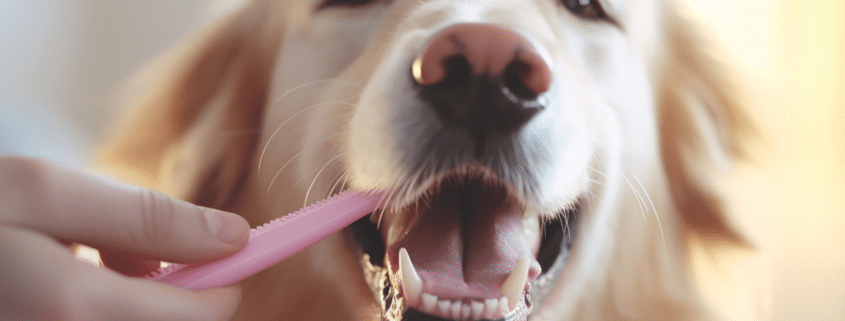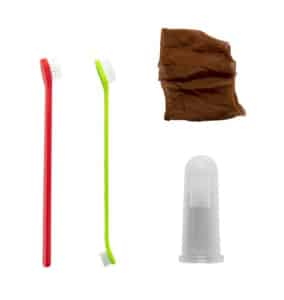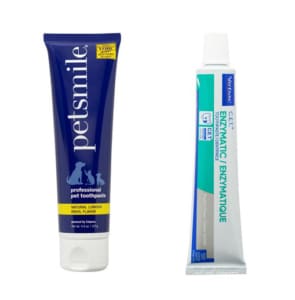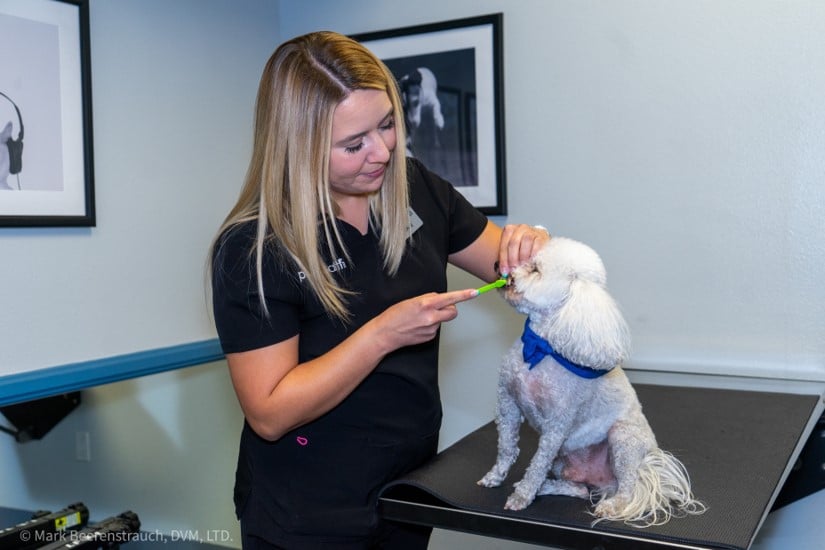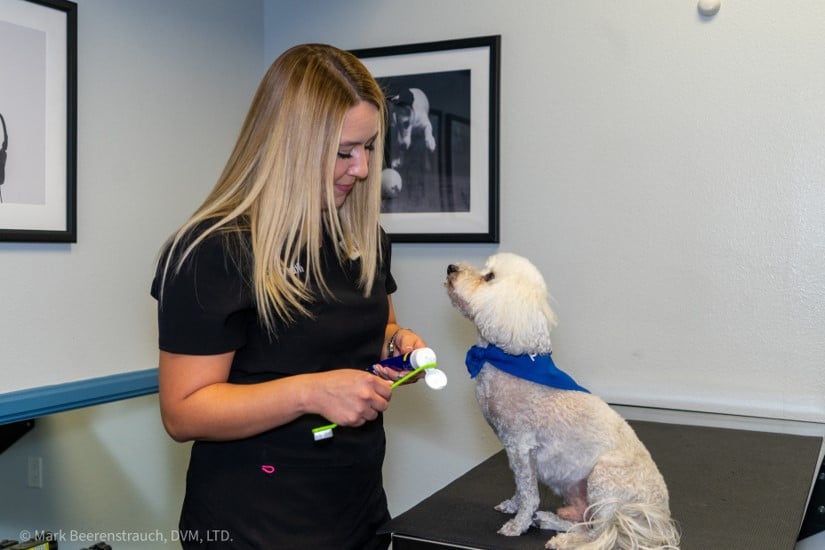The Importance of Brushing Your Pet’s Teeth

Pets need their teeth brushed for the same reason we do – to remove food, debris, and plaque from the surface of their teeth. This prevents plaque from hardening into tartar and creating pockets between the teeth and gums, leading to gingivitis (bacterial infection and inflammation of the gums).
Left untreated, gingivitis eventually leads to periodontal disease (bone deterioration, bone loss, and tooth loss caused by the bacterial infection of the tooth’s attachment, the periodontal ligament, to the jawbone). In addition to causing oral discomfort, periodontal disease can lead to bacterial infections throughout the body that damage organs and can even cause death.
Although gingivitis can be reversed, periodontal disease is irreversible. So, prevention is key to preserving both your pet’s oral health and their general health.
How Often Should I Brush My Pet’s Teeth?
Ideally, a pet’s teeth should be brushed once a day to remove plaque and prevent the accumulation of tartar.
What Do I Use for a Toothbrush?
When brushing your pet’s teeth, using a toothbrush designed for your pet’s species and size is best. We don’t recommend using human toothbrushes because their bristles are generally too hard and designed specifically for a person’s teeth.
With medium and large dog breeds, you will likely use a toothbrush with soft bristles, a long handle, and an angled brush head to help you reach your pet’s back molars.
Finger brushes (like nubbed and textured rubber thimbles) usually work best with small dog breeds and cats.
If your pet won’t tolerate these tools, you can start by using a small piece of nylon pantyhose. Wrapped around your finger, the slightly abrasive fabric will feel better in your pet’s mouth while still helping clean their teeth’ surface.
What Do I Use for Toothpaste?
Do not use toothpaste formulated for people. These contain detergents, salts, sudsing agents, and baking soda that should not be swallowed. Since pets can’t rinse, pet-friendly toothpaste formulas are designed to be safe for ingesting.
Instead, look for a formula designed for cats and dogs at your favorite pet store. These kinds of toothpaste are safe for pets and come in pet-friendly flavors. Additionally, most dog and cat toothpaste contain enzymes to help control plaque.
How to Brush Your Pet’s Teeth
Although it’s simplest to start brushing when your pet is still a puppy or a kitten, mature pets can still be taught. Like teaching your pet any new trick, the key to training your pet to have their teeth brushed is to start slowly and to encourage good behavior with positive reinforcement techniques (i.e., with lots of treats and love).
Pet Health Expert Tip: While brushing, remember that you only need to brush the outside of your pet’s teeth. Their saliva will naturally wash plaque away from the teeth’s inside surface.
Toothbrush Training Step 1
First, help your pet get accustomed to having your fingers in their mouth.
Practice two times a day, using just your fingers, to gently rub your pet’s teeth with a back-and-forth motion like you would with a toothbrush. Do one side (left or right) at a time, making sure you reach the back teeth (molars and premolars) and the front teeth (canines and incisors).
Be sure to praise your pet and reward their good behavior for making toothbrush time a positive experience.
Toothbrush Training Step 2
After a couple of weeks of Step 1, or once your pet is used to the process, add a toothbrush (without toothpaste) and brush your pet’s teeth like before.
With the toothbrush’s bristles at an angle to reach below the gum line, try to brush two or three teeth at a time for ten back-and-forth motions before moving on to the next section. Ideally, brushing all of your pet’s teeth would be best, but their molars and premolars are the most important.
Like before, offer your pet plenty of praise and rewards and continue practicing two times a day until your pet is used to the toothbrush.
Toothbrush Training Step 3
When used to their toothbrush, you can add pet-friendly toothpaste. Perform the same technique as Step 2, and continue offering praise to ensure your pet always has a positive, rewarding experience during toothbrushing.
If you have questions about toothbrushing techniques or dental health supplies for pets, we welcome you to talk with a Pet Health™ veterinarian.

